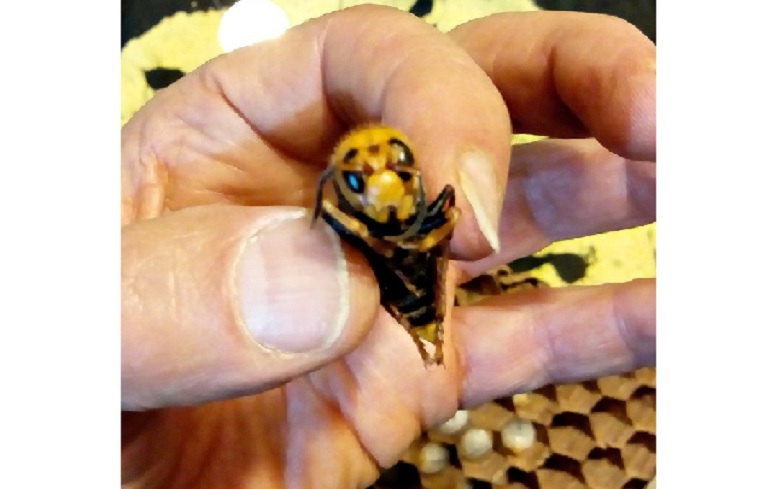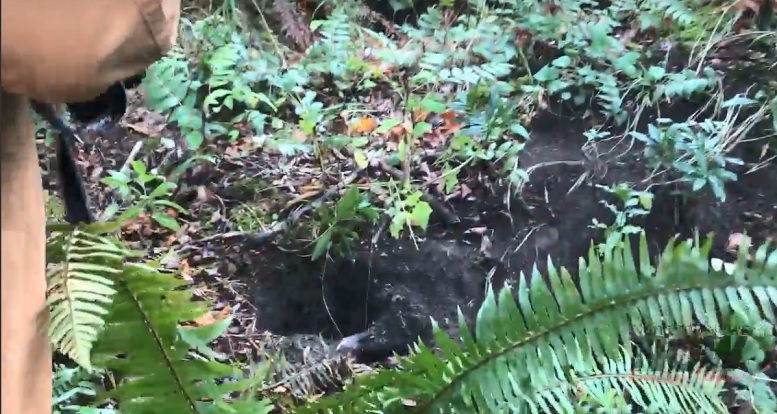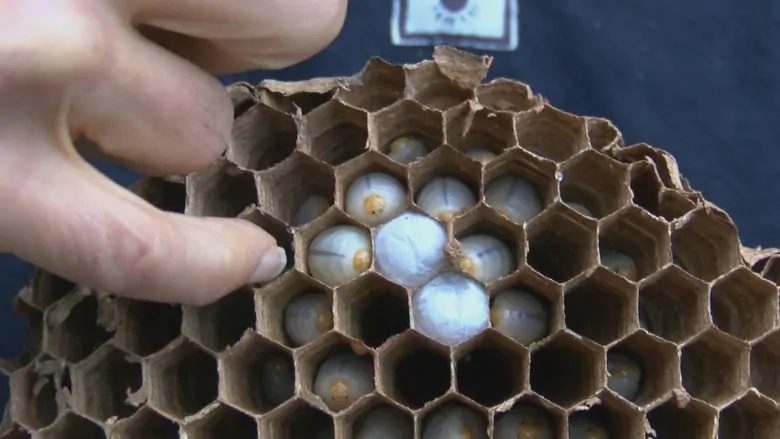Various Canadian agencies concerned with the environment have been battling invasive species for years, and now a destructive new threat has arrived.
A giant hornet from Asia has now joined threats from the invasive fish species known as Asian carp and the emerald ash borer also from Asia.

The giant hornets can grow from 1.5 to 2 inches (3-5cm) with even larger wingspans (via Nanaimo Bulletin)
The invasive hornet are the largest of hornet species and feed on insects including pollinating bees. They can destroy a beehive in short order. Their sting can be very painful because of the powerful venom.
In August, reports came to the British Columbia Ministry of Agriculture of giant hornets spotted in Nanaimo on Vancouver Island. Beekeeping experts later were able to locate and track the bees to their underground nest. They then stunned the insects using carbon dioxide from fire extinguishers before collecting them and placing most of them in alcohol.

Because they nest underground they can be hard to find. The nest was found by experts in a heavily wooded area near a park (via Nanaimo News-video)
The giant hornets, about 150 of them, were recovered and will now be preserved and studied for information about their origins and other aspects.
End of threat?
However, some people have spotted a few survivors, and officials and bee experts are investigating reports of a second nest.

The experts later removed pupae in the nest. They are now investigating the possibility of a second nest (CHEK News-via CBC)
Meanwhile, other invasive threats include the Asian carp which has caused havoc in some American waterways. It has been seemingly contained so far in Canada. However, the invasive emerald ash borer beetle has destroyed literally millions of majestic ash trees across much of the U.S and Canada. It is thought the beetles arrived in wood packing crates or pallets from Asia in 2002. Efforts have long been underway to stop its destruction, but so far to little avail. The spread of the beetle and the destruction are raising fears the ash tree may not survive in North America.
Additional information-sources
- CBC: Sep 19/19: Invasive giant hornet nest destroyed.
- Nanaimo Now: I. Holmes: Sep 19/19: Giant hornet nest located and destroyed (+ video)
- CTV: A.Chen: Sep 19/19: Beekeepers find, destroy invasive hornets (+ news video report)
- Global News: S.Boynton: Sep 19/19:Asian giant hornet nest eradicated (+video)
- Nanaimo News Bulletin: G.Sakaki: Nanaimo beekeepers take down invasive hornet nest
- CBC: J.Ballard: Sep 11/19: Honeybee eating invasive hornets found in B.C
- Youtube- Giant hornet sting effect on video personality







For reasons beyond our control, and for an undetermined period of time, our comment section is now closed. However, our social networks remain open to your contributions.